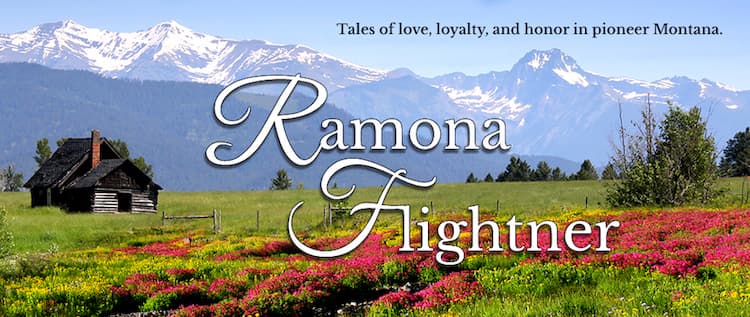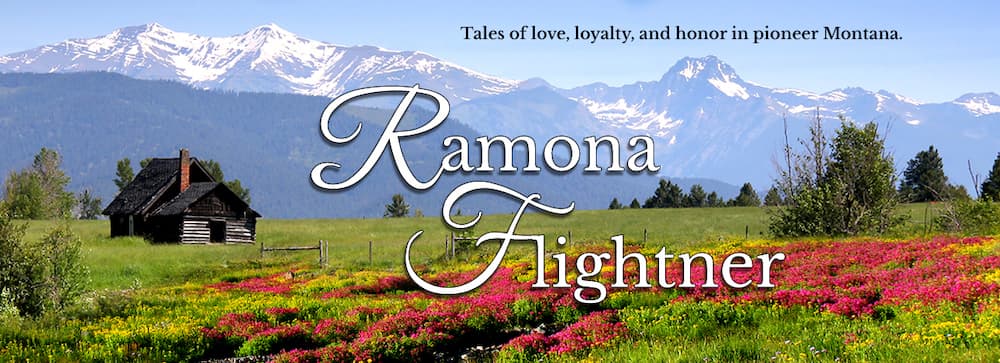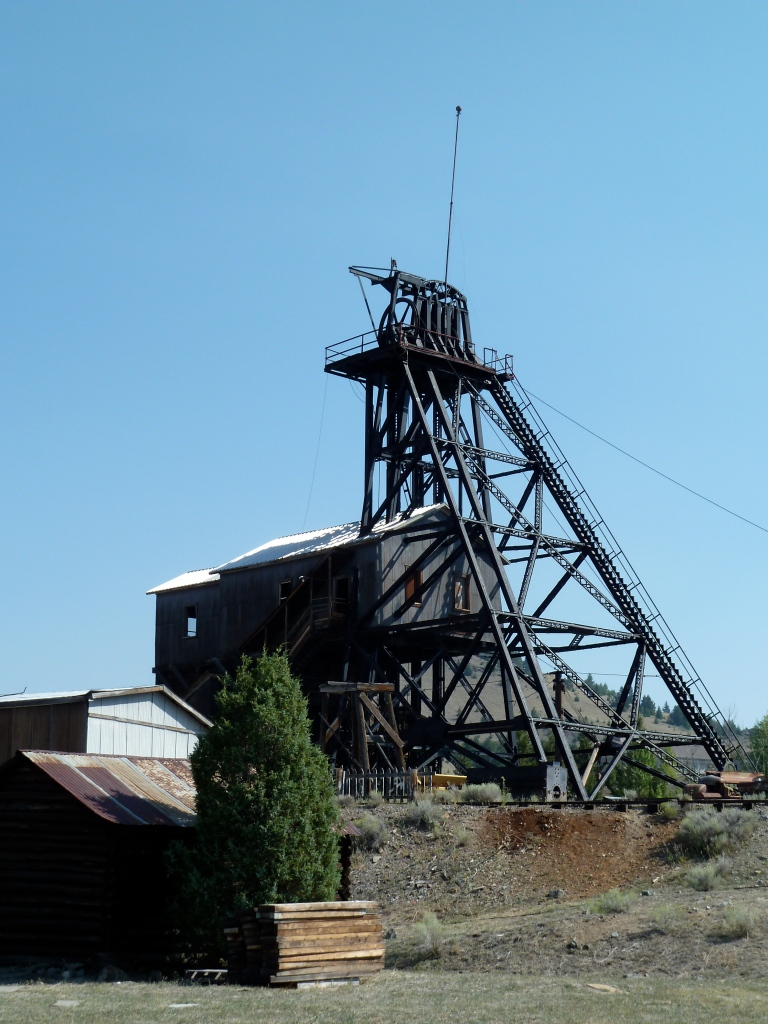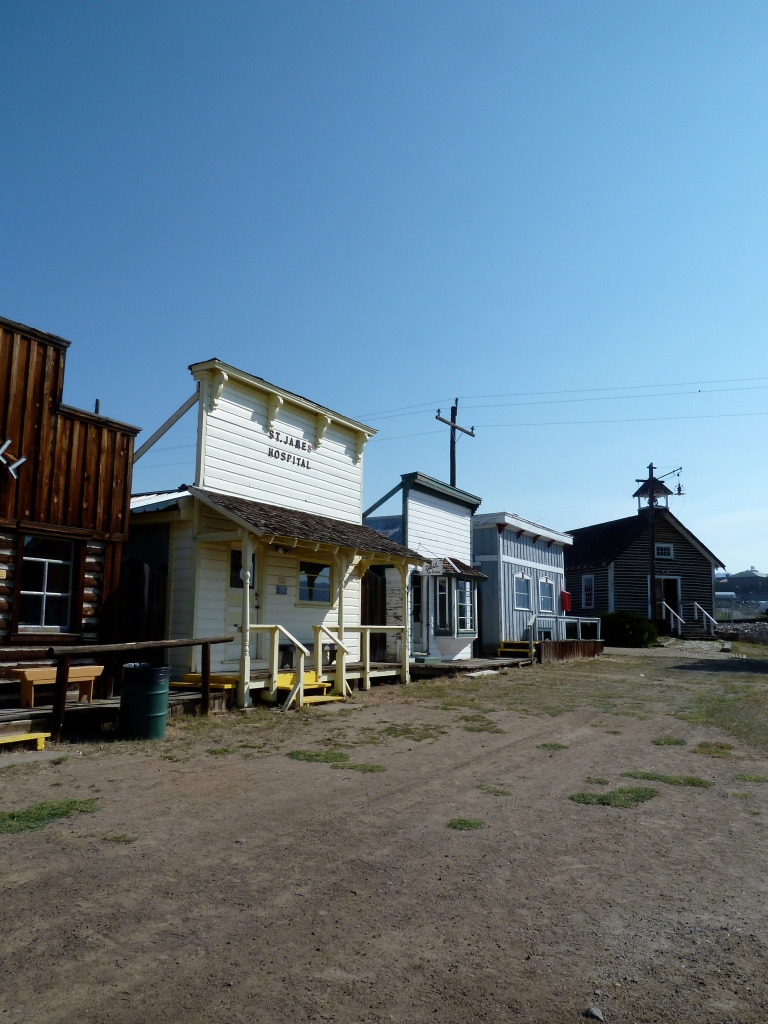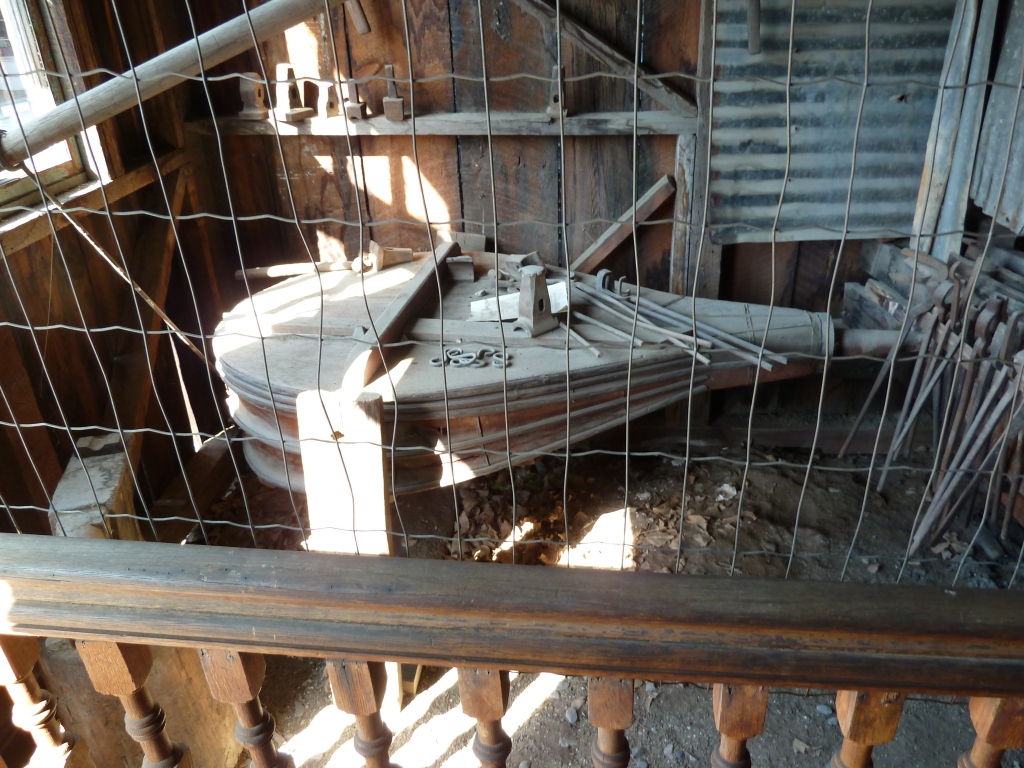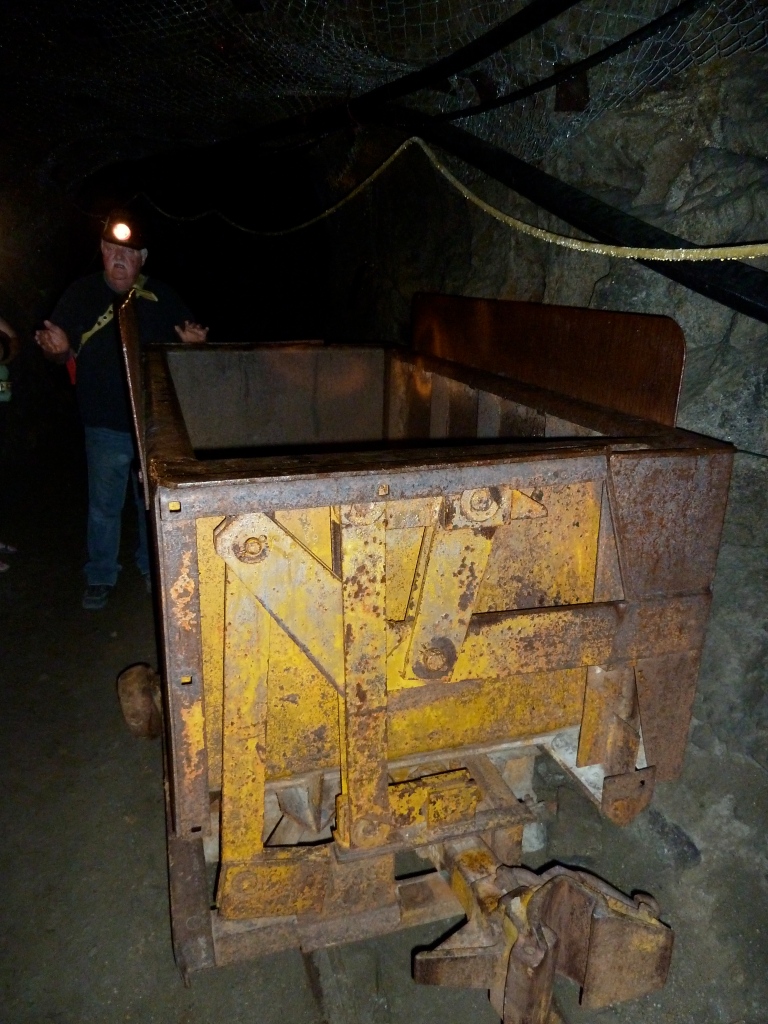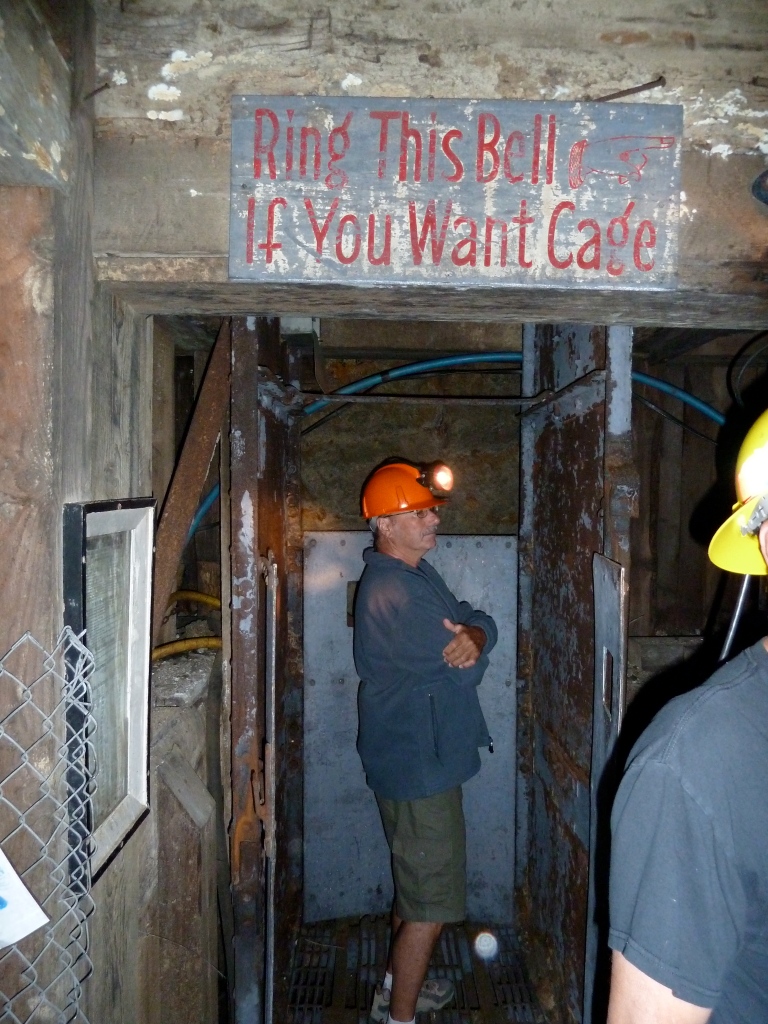By Ramona Flightner/ @ramonaflightner
When I knew I would travel to Butte again this summer, one of my “must visit” places to go to was the World Museum of Mining. I had heard about the museum for years with everyone who had visited saying that it was a wonderful experience. They especially raved about the underground tour. I thought, “It’s dark, wet and dangerous. Who’d want to go underground and act like a miner?” Well, of course the answer to that was, “Me!!”
I wanted to have an inkling of an idea of what it was like to be a miner. Though my main character is not a miner, some of his friends are, and I wanted to better understand what that life was like. What the cage was like. What the tunnels and tools were like. I can glean quite a bit from books, but I am someone who likes to do things or go places in person if I can, so this was a perfect opportunity for me.
We arrived early for our tour and had time to wander the recreated streets of an old town. It reminded me of Nevada City that I visited last year. I enjoyed poking my head in and seeing the old buildings. They had an old streetcar schedule posted in one building and I took photos, as that sort of information can be difficult to find. I also enjoyed looking at the blacksmithing shop. Ever since I took my blacksmithing class, I have been very interested with blacksmiths and how to set up a proper shop. The bellows was enormous in this shop.
The building that truly fascinated me was the sauerkraut building. There was a couple in the late 1800’s who had a cabbage business and they brought in 3-4 barrels of prepared sauerkraut several times a week to Butte. That’s a lot of cabbage! In the building, it showed how the whole production worked- sun, rain, or snow.
Finally, it was time for our tour. My mum, aunt and I took it and our tour guide was a very friendly man who had worked in the mine for about 3 years. He pointed out the older mining machines that had been used, showing how everything continued to improve, get bigger, and allow for more extraction of ore. It was all about making more and more of a profit.
We went to a small shed where we were fitted with a miner’s helmet and I was really surprised at how heavy they were. The light on the front was vital as it was our only light source when we were down in the mine. The walk into the mine was a little steep, and once we entered the mineshaft, very dark. A dank, musty smell permeated the air.
We stopped near the entrance to stare at the ceiling and our guide then tapped the ceiling, showing us how the miners started their days: checking for any loose rocks. A rock was not called a rock in Butte, but a “duggan.” He said if you got hit by a “duggan” it was generally a very bad thing and you ended up having to go see Duggan, who was the undertaker. I loved the morbid humor. (As an aside, when we were driving around Butte’s Uptown later that day, we drove by the Duggan funeral parlor!)
We continued our way into the mine, seeing how the mine carts changed, growing in size from a time when animals pulled them to when they had electricity to move them. There were mules and horses in the mines until at least the 1920’s to pull the heavy ore carts. Once they were in the mineshafts, they rarely saw the light of day again. The persistent darkness led to blindness for the hardworking animals. When the mine owners made the decision to move the horses and mules to the surface, miners knew it was going to be a long strike.
Our guide showed us how the way ore was extracted changed over time. Toward the beginning, men worked in pairs, the more seasoned miner swinging the hammer, the younger one holding the spike. However, it was very dark in the mine making it difficult to see the edge of the spike, so the younger one would paint his thumb nail white, and place it over the edge of the spike and move it away at the last second. We imagined that there were a lot of broken (or missing) thumbs in Butte during this time. He described how mining quickly became more sophisticated and by the 1890’s, they were using drills in the mines.
Finally, we arrived at the cage. The cage is what the men climbed into to go down the mine every morning and come up every night. It’s like an elevator, but not nearly as nice. What surprised me was how tiny it was. I had read that 8 miners fit in the cage. Nowadays, I think we’d be lucky to have 4 people fit! He showed how the intricate call system worked for the cage and how they would call if there were an accident. It was like a modified Morse code with the capability of communicating quite a bit through a bell/horn like noise.
We moved back up to a side drift to see and hear what a drill sounded like. It was so incredibly loud in a confined space! When the miners had drilled enough holes, they filled them with dynamite and then tried to tap in the fuse lightly. That’s where the saying, “tap ‘er lightly” originated and it is how a lot of Butte natives say goodbye to each other. For if you did not “tap ‘er lightly”, it could all end a bit prematurely. One man would try to sit close enough to the area that was to be dynamited to listen for each fuse to explode to ensure that everything had gone off before the men returned to start loading up the ore. Of course, there were accidents. Fuses would not go off until the men were working in the rubble and many men were maimed and killed in the mine.
I had thought our modern-day headlamps gave decent light, though at times I wished I could see more and better. However, when he had us turn off all of our lights to show us what it was like until around 1908-1910 when men used candles to see by, I realized how lucky we were to have our headlamps. The overwhelming darkness was incredible. I couldn’t imagine working in such darkness every day.
There was a great sense of camaraderie between the miners. There existed the expectation that at the end of each shift, the miners leaving the shift would detonate ore for the oncoming group so that they could ease into their shift. If the shift boss realized that the outgoing group hadn’t done this, they would be asked to pick up their paycheck and not return.
Our guide was excellent. He emphasized that, though we as Americans have a tendency to romanticize everything, there was nothing romantic about hard-rock mining. It was a dangerous job with too many accidents and too many deaths. Also, many men suffered the after-effects of lung disease from mining for so many years in a confined space.
Our guide only worked 3 years in the mines before joining the military and eventually becoming a teacher. He said that every day he put on a suit and tie to go to work, he’d say to himself, “This is for you, Dad”- for the man who spent his life working underground with the hopes that his son wouldn’t have to.
© Ramona Flightner
